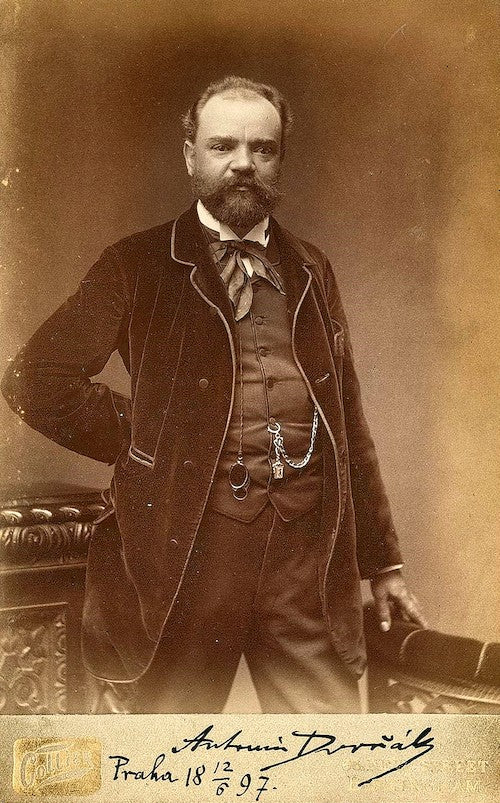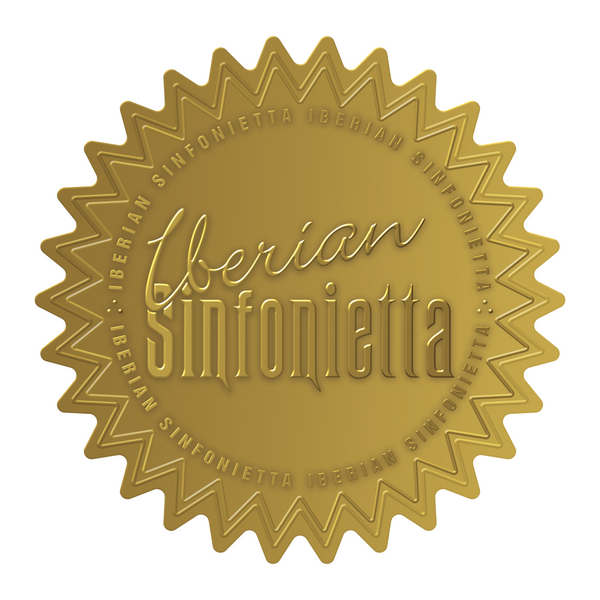
RHYTHMS AND DANCES OF BOHEMIA AND MORAVIA WILL BE PRESENT IN THE NEXT CONCERT OF IBERIAN SINFONIETTA
Dear public,
Next Saturday the 26th we will be able to see each other at the Three Styles concert by Iberian Sinfonietta . It will be at 7:00 p.m. at the Peace Palace in Fuengirola.
A few days ago, we commented on some aspects of the work that will close the Concert, none other than Beethoven 's First Symphony. Today, we will dedicate a few words to the central work of the Concert, Dvorak 's Czech Suite.

It is a work that he composed as a commission from the Society of Czech Journalists, to raise funds for the construction of a Grand National Theater. In fact, it will be directed by the president of the Association and friend of Dvorak, Adolf Cech. Being part of an empire like the Prussian Empire made some places or regions delve deeper into their own music, this happened in literature, music and many other arts. Dvorak , in that sense, like Smethana, had a special role and recognition. Their constant search for typical melodies, their own rhythms and rhythms and the use of everything they understood as their own, they incorporated into their works and, from very early on, they had the approval of the public. In this stage of youth, he composed this work; It is a work that, together with his Slavic Dances, presents us with a particularly inspired and inspiring Dvorak .
This is how he builds this piece, organized in five movements that recreate his own music and styles, such as Preludium (Pastorale), Polka, Sousedská (Minuetto), Romance and Finale. It is a work that flows with charm through different dances and rhythms from Bohemia, Moravia and Central Europe. In fact, it is included in its stage called “Slavic period”. If the musical landscape remains invariably Czech dance and folk melody, it is nevertheless animated by the rigor and beauty of classical harmony, especially that of Mozart.
The first movement, marked Prelude (Pastorale), is in fact a kind of lyrical introduction to the later movements, with very little contrast and a melodic line in the upper voices flowing smoothly over an ostinato bass figure consisting simply of two alternating whole tones. The second movement is a poetic stylization of the Czech folk dance “polka”; The main theme in its D minor main setting is essentially melancholic in nature, but then changes to F major and becomes more rhythmic and expressive. The third movement is inspired by another folk dance, the “sousedska”, a dance in 3/4 time, and is typical for its colorful imitative treatment of the main theme. The fourth movement, called Romance, offers a wonderful lyrical nocturne in which, with a serene accompaniment on the strings, a broad melody opens an arc on the flute and is then taken up by other instruments. The final Furiant completes the suite in dazzling style with his lively expression and more boisterous temperament.
 |
 |
 |

|

|
As we can see, three movements in this suite are directly Slavic: the second (Allegro grazioso) is a polka (originally Czech peasant dance, not Polish); the third (Allegro giusto) is a sousedska (Bohemian village dance), like the furious rhythms of the finale (Presto), which features syncopations in three-beat time, creating ambiguity between binary and ternary rhythm. With the pastoral character of the first movement (Allegro moderato) and the melancholic romance of the fourth (Andante con moto), the score takes on the classic character of a series of dances, where the movements follow one another in different rhythms but remain united by a great unity. structural.
Soon, this and other works, which make him a very renowned musician, will open the doors of great proposals that he accepts, such as directing the National Conservatory of Music of America in New York, where he will move ten years after the premiere of his “Czech Suite”.
Not to miss it.
Jorge Rodríguez Morata
Pedagogical content coordinator
